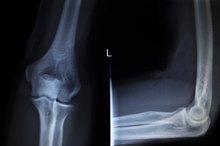Why Is Good Posture Important During Work/Typing?
Without good posture, many of the daily tasks you perform during your workday can cause immediate and chronic health problems. This is especially true if your job requires you to sit at a desk for long periods performing repetitive actions such as typing 2. Understanding how posture affects your body and the problems poor posture can cause can make choosing and applying solutions easier and more effective.
If you are experiencing serious medical symptoms, seek emergency treatment immediately.
Purpose
Good typing posture is important to reduce both dynamic and static loads you place on muscles. Dynamic load refers to the pressure you place on muscles during movement. This can include the movement of your arms, hands and fingers as you type, as well as head and neck movements. The relaxing and contracting that make up dynamic movements require a body position that allows for deeper breathing and sufficient blood flow to the active muscles. Static load refers to the pressure you place on inactive muscles, such as those in your back and shoulders.
- Good typing posture is important to reduce both dynamic and static loads you place on muscles.
- Static load refers to the pressure you place on inactive muscles, such as those in your back and shoulders.
Effects
Posture & Heart Rate
Learn More
Poor posture, including slouching and incorrect arm and wrist position as well as the time you maintain an incorrect posture can produce a number of immediate effects. Muscle and joint pain and fatigue are common effects. In addition, insufficient blood flow can cause a tingling sensation or loss of feeling. Chronic or long-term effects can include nerve injuries, especially in your wrists, aggravated high blood pressure, a reduction in muscle strength and muscle swelling.
- Poor posture, including slouching and incorrect arm and wrist position as well as the time you maintain an incorrect posture can produce a number of immediate effects.
- Chronic or long-term effects can include nerve injuries, especially in your wrists, aggravated high blood pressure, a reduction in muscle strength and muscle swelling.
Position
Good posture involves properly positioning both your chair and keyboard in a way that allows your feet to sit flat on the floor, your shoulder muscles to relax and your back to stay straight. The chair you use should support your lower back and have adjustable armrests that allow you to keep your arms close to your sides. In addition, the chair should be adjustable so you can set its height for correct foot placement, either flat on the floor or on a footrest. The position of your typing keyboard should require your elbows to bend at no more than a 90-degree angle, allow your arms to remain at your side and allow your wrists to remain in a neutral, or almost straight, position.
- Good posture involves properly positioning both your chair and keyboard in a way that allows your feet to sit flat on the floor, your shoulder muscles to relax and your back to stay straight.
- In addition, the chair should be adjustable so you can set its height for correct foot placement, either flat on the floor or on a footrest.
Considerations
What Are the Causes of Back Pain When Working on the Computer?
Learn More
Try to refrain from adjusting your chair so it is in a reclining position. Although this may be a comfortable position for your back in the short-term, it increases pressure on your shoulders and neck. If your keyboard has a wrist pad, keep in mind you should not use this as a wrist support while typing, as a pad will cause bending in your wrist. If you have problems keeping your wrist straight, try adjusting the angle of your keyboard.
- Try to refrain from adjusting your chair so it is in a reclining position.
- If your keyboard has a wrist pad, keep in mind you should not use this as a wrist support while typing, as a pad will cause bending in your wrist.
Related Articles
References
Writer Bio
Based in Green Bay, Wisc., Jackie Lohrey has been writing professionally since 2009. In addition to writing web content and training manuals for small business clients and nonprofit organizations, including ERA Realtors and the Bay Area Humane Society, Lohrey also works as a finance data analyst for a global business outsourcing company.









